Discogram
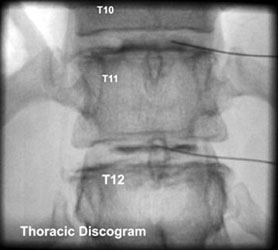 Discogram is a diagnostic test primarily performed to identify the source of pain. It also gives information about the condition of the discs. The patient is initially given intravenous medication for relaxation and pain, and after local anesthesia a needle is placed into the suspected disc and a small amount of radiographic dye is injected. A normal disc will not be painful when a small amount of dye is injected. However if the patient's pain is coming from the disc, it is likely that the contrast injection will cause pain similar to what the patient normally experiences.
Discogram is a diagnostic test primarily performed to identify the source of pain. It also gives information about the condition of the discs. The patient is initially given intravenous medication for relaxation and pain, and after local anesthesia a needle is placed into the suspected disc and a small amount of radiographic dye is injected. A normal disc will not be painful when a small amount of dye is injected. However if the patient's pain is coming from the disc, it is likely that the contrast injection will cause pain similar to what the patient normally experiences.
Discography is usually performed in the lumbar spine but can be done also in the cervical and thoracic spine.
Cervical Discogram
When the pain is located in the neck and other studies have not been able to identify the source of the pain cervical discogram can sometimes be helpful. Thin needles are place in the disks and if injection pressure causes significant pain this is an indication that the pain is originating from the disk itself. Three or more disks are often injected to make sure that the painful one is included in the study.
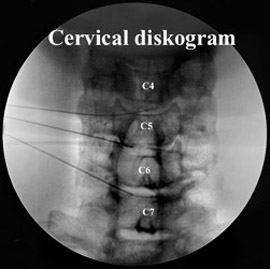
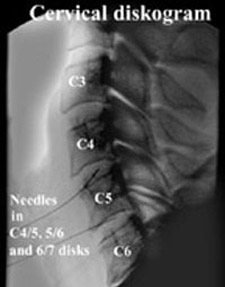
Lumbar Discogram
When the pain is thought to be discogenic and is located in the lumbar spine a discogram of this region is often helpful to pinpoint the origin of the pain. Here is a L3/4 through L5/S1 discogram. The single level discogram illustrates the normal morphology of the lumbar disk.
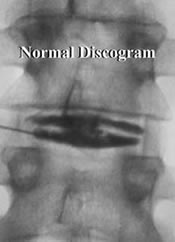
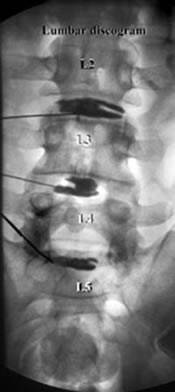
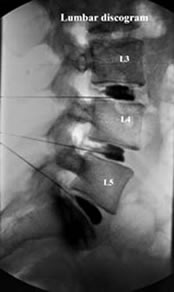
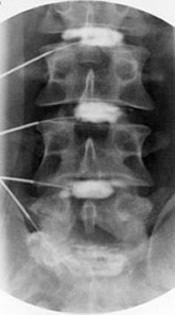
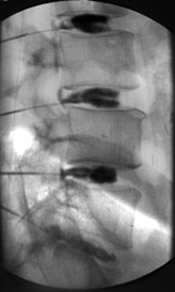
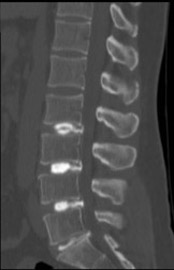
Discogram Patient Brochure
Back to list of procedures